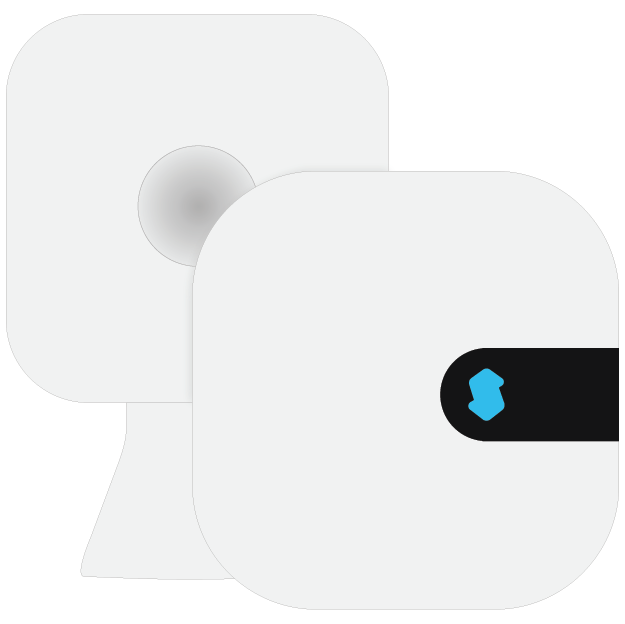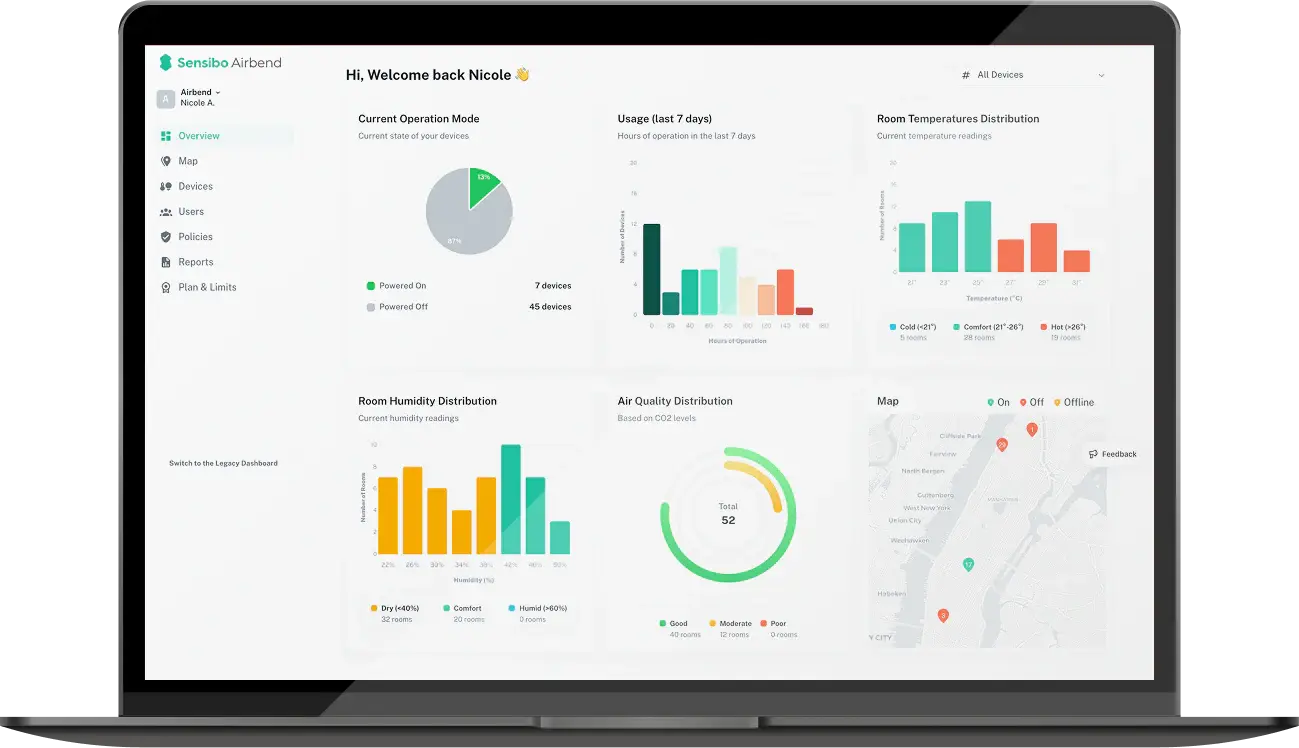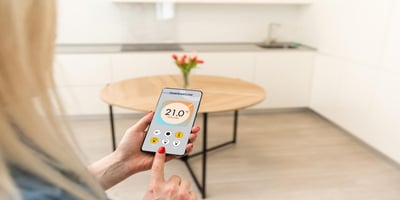The Role of Temperature Monitoring in Hospital Environments
American hospitals lose millions of dollars annually due to temperature control failures that destroy medications, vaccines, and blood products. These incidents happen when refrigeration systems malfunction and staff don't receive immediate alerts about the problems.
Temperature monitoring affects more than hospital budgets. When medications lose potency or blood products spoil, patient care suffers directly. Critical supplies become unavailable when needed most. Surgery schedules face disruption. Emergency treatments get delayed.
Quality hospital temperature monitoring prevents these problems by providing instant alerts when conditions drift outside safe ranges. Staff can respond immediately, transfer inventory to backup storage, and maintain uninterrupted patient care while protecting valuable medical supplies.
Key Takeaways
- Temperature failures can destroy tens of thousands of dollars in inventory overnight, with single refrigeration breakdowns affecting entire pharmacy or blood bank supplies
- Vaccine effectiveness drops by over 35% when stored outside proper temperature ranges, making immunizations less effective and potentially requiring patient re-vaccination
- Smart monitoring systems typically reduce hospital energy costs by 20-40% through automated adjustments and zone-based climate control throughout different facility areas
- Remote monitoring allows 24/7 oversight without requiring on-site staff presence, providing instant alerts through smartphones and enabling rapid response to temperature deviations
- Most hospitals recover their monitoring system investment within 12-18 months through reduced medication waste, lower insurance premiums, and avoided regulatory compliance penalties
The Critical Role of Temperature in Healthcare Environments
Walk through any hospital and you'll notice different areas feel completely different. The operating room stays cool and dry. Patient rooms feel warm and comfortable. The pharmacy maintains precise conditions around the clock.
These aren't random choices. Each area needs specific temperatures for good reasons. Surgical patients lose body heat quickly during operations, so operating rooms stay between 68-73°F. Burn patients need warmer environments—around 80-85°F—to help their bodies heal properly. Intensive care units keep temperatures steady because critically ill patients can't regulate their own body heat well.
Medications are even pickier about temperature. Store insulin above 46°F and it starts breaking down. Keep antibiotics too warm and they lose strength. Vaccines stored outside their narrow temperature range become useless or even dangerous. The CDC found that improper storage reduces vaccine effectiveness by over 35% in many cases.
Your hospital AC system does more than keep people comfortable. It protects millions of dollars in inventory while creating healing environments for patients. When these systems fail, everything else falls apart quickly.
Medical equipment also depends on stable temperatures. MRI machines, lab analyzers, and blood chemistry equipment work best within specific ranges. Temperature swings cause calibration drift, which leads to inaccurate test results. Diagnostic errors follow, putting patients at risk.
Staff performance drops in poorly controlled environments too. Nurses make more mistakes when they're too hot or cold. Doctors get fatigued faster. Simple temperature control helps everyone do their jobs bett.jpg?width=800&height=400&name=noncontact-modern-device-monitoring-body-temperature-using-infrared-noncontact-forehead%20(1).jpg)
Understanding Hospital Temperature Monitoring Systems
Modern hospital temperature monitoring goes way beyond wall-mounted thermometers. Today's systems use wireless sensors, cloud storage, and smartphone apps to watch conditions 24/7. When something goes wrong, the right people know immediately.
Good medical temperature monitoring systems include several parts working together. Sensors measure temperature and humidity continuously. Data loggers store this information automatically. Alert systems send notifications when readings go outside safe ranges. Reporting software generates compliance documents for inspectors.
These systems need to cover many different areas:
- Medication storage rooms and pharmacy refrigerators
- Laboratory freezers and specimen storage
- Blood banks and tissue preservation units
- Patient care areas with special requirements
- Food service refrigeration and storage
- Equipment rooms housing sensitive devices
Each location has different needs. Vaccine storage requires the tightest control—even one degree off spec can ruin thousands of dollars in inventory. Patient rooms need comfort more than precision. Laboratory storage protects research samples that took months to collect.
The best systems connect everything together. Facility managers can check conditions across the entire hospital from one dashboard. Energy costs go down when heating and cooling systems work together efficiently. Problems get spotted and fixed before they cause damage.
Medication and Vaccine Storage
Medication storage represents the highest-stakes area for temperature control. Hospitals stock millions of dollars in pharmaceuticals that require exact storage conditions. Get the temperature wrong and these life-saving drugs become worthless—or worse, dangerous.
Different drugs need different conditions. Insulin dies quickly above 46°F. Growth hormone needs constant refrigeration between 36-46°F. Many cancer drugs require freezer storage below zero. Even "room temperature" medications have limits—usually 68-77°F with low humidity.
Vaccine storage follows even stricter rules, especially for facilities in government programs:
- Refrigerated vaccines: exactly 35-46°F
- Frozen vaccines: -58°F to 5°F maximum
- Continuous monitoring with data backup
- Instant alerts for any temperature drift
- Complete documentation for inspections
Blood products and biological samples present their own challenges. Whole blood lasts only when stored at 1-6°C. Plasma needs deep freezer storage at -18°C or colder. Tissue samples, research specimens, and transplant materials each have specific requirements that can't be compromised.
Real hospitals see real benefits from proper monitoring. Cleveland Clinic avoided a $150,000 loss when sensors caught a pharmacy freezer failure on Christmas morning. Staff transferred medications to backup storage before any damage occurred. Without monitoring, they would have discovered the problem Tuesday morning—too late to save anything.
Good monitoring also protects hospitals legally. When patients claim medications were ineffective, detailed temperature logs prove proper storage. Insurance companies and regulators accept this documentation during investigations.

The Backbone of Hospital Climate Control
Smart HVAC systems change how hospitals manage climate control. Instead of running heating and cooling equipment on simple timers, these systems respond to real conditions throughout the building. Temperature sensors feed information directly to HVAC controls, which adjust heating, cooling, and airflow automatically.
This integration saves money immediately. Hospitals typically cut energy costs by 20-40% after upgrading to smart systems. The equipment works more efficiently because it only runs when needed, where needed.
Zone control makes the biggest difference. Different hospital areas can maintain completely different conditions simultaneously. The pharmacy stays at exactly 70°F while the operating room runs at 65°F. Patient rooms adjust based on occupancy. Empty areas switch to energy-saving mode automatically.
Smart HVAC benefits include:
- Automatic response when temperature alarms trigger
- Energy savings from demand-based operation
- Early warning before equipment failures occur
- Remote control and monitoring capabilities
- Detailed reports for energy management
Predictive maintenance catches problems early. The system tracks equipment performance and warns when components start wearing out. Motors get replaced before they fail. Filters get changed based on actual usage, not arbitrary schedules. This prevents the sudden breakdowns that endanger patient care.
The Future of Healthcare Oversight
Remote medical temperature monitoring lets hospitals watch critical areas from anywhere, anytime. Sensors send data wirelessly to cloud servers that staff can access from home, other buildings, or even vacation. No more weekend trips to check refrigerator temperatures manually.
These systems use cellular or WiFi connections to transmit data continuously. When temperatures drift outside safe ranges, alerts go out immediately through text messages, emails, and phone calls. Multiple people get notified to ensure someone responds quickly.
Cloud storage solves many problems that older systems created. Data never gets lost because everything backs up automatically. Storage space is unlimited. Historical information stays accessible for years, which helps with compliance reporting and trend analysis.
Mobile apps put monitoring capabilities on every smartphone. Pharmacy managers can check medication storage from home during snowstorms. Maintenance supervisors get instant alerts about equipment problems. Hospital administrators access compliance reports from anywhere.
Integration with other hospital systems creates complete operational oversight. Electronic health records, building automation, and inventory management all share temperature data. This coordination improves decision-making and reduces manual work.
Small clinics benefit just as much as major medical centers. The technology scales from monitoring a few vaccine refrigerators to overseeing hundreds of temperature points across multiple campuses. Pricing models let facilities pay only for what they need while expanding coverage over time.

Regulatory Compliance and Quality Standards
Hospital temperature monitoring must meet strict regulations designed to protect patients and ensure quality care. The Joint Commission sets standards that require continuous monitoring of medication storage, detailed record-keeping, and immediate response to temperature problems.
Federal agencies add more requirements. The FDA regulates how pharmaceuticals get stored and handled. The CDC establishes vaccine storage rules through programs like Vaccines for Children. Medicare and Medicaid tie reimbursement to environmental standards in many cases.
State and local rules often exceed federal requirements. Health departments, pharmacy boards, and licensing agencies each maintain their own environmental monitoring standards. Multi-state hospital systems find compliance particularly challenging because rules vary significantly between jurisdictions.
Good documentation includes:
- Continuous temperature records with timestamps
- Alert notifications and response actions
- Staff training records and competency tests
- Equipment calibration certificates
- Regular system performance reviews
Research on hospital temperature standards shows clear connections between temperature management and indoor air quality in healthcare facilities. Proper environmental control reduces infection rates and improves patient outcomes.
Non-compliance creates serious problems. Facilities face warning letters, fines, and potential loss of accreditation. Medicare participation can be suspended. Professional liability insurance rates increase for hospitals with poor compliance histories.
Implementation Best Practices for Hospital Temperature Monitoring
Starting a hospital temperature monitoring program requires careful planning and realistic expectations. Begin by auditing current capabilities and identifying the biggest risks. Focus on areas where temperature failures would cause the most damage or endanger patient safety.
Choose systems that balance features with reliability. Fancy capabilities don't matter if the equipment breaks down or gives false alarms. Look for vendors with healthcare experience and good support records. Make sure new systems work with existing building infrastructure.
Staff training determines success or failure. Everyone who works with the system needs to understand how it operates, what different alarms mean, and how to respond appropriately. Training should be role-specific—pharmacy staff need different knowledge than maintenance workers.
Maintenance schedules keep systems accurate and compliant. Most sensors need annual calibration to meet regulatory requirements. Battery-powered devices need replacement schedules. Software updates provide security patches and new features.
Emergency procedures should cover common scenarios like power outages, communication failures, and temperature excursions. Staff need to know who to contact, how to protect inventory, and what documentation is required. Practice these procedures regularly so everyone responds correctly under pressure.
Return on investment usually appears within 12-18 months. Prevented medication losses, reduced insurance premiums, and avoided regulatory penalties add up quickly. Many hospitals recover their entire investment after preventing just one major temperature failure.

Technology Trends and Future Innovations
Hospital temperature monitoring continues advancing as new technologies become available. Internet of Things sensors provide better connectivity and longer battery life while reducing installation complexity. These devices monitor multiple environmental factors simultaneously using existing network infrastructure.
Artificial intelligence helps predict equipment failures before they happen. Machine learning algorithms analyze performance patterns and warn when components show signs of wear. This moves hospitals from reactive maintenance to proactive management.
Blockchain technology offers new ways to ensure data integrity and simplify compliance reporting. Temperature records stored on blockchain platforms can't be altered or falsified, providing undisputable proof of proper storage conditions during audits and investigations.
Sustainability initiatives drive demand for energy-efficient monitoring solutions. Solar-powered sensors, ultra-low-power wireless protocols, and cloud-based processing reduce environmental impact while often cutting operating costs.
Future developments include quantum sensors for unprecedented measurement precision, 5G connectivity for real-time capabilities, and augmented reality interfaces for maintenance and troubleshooting. These advances will make monitoring systems more intelligent and easier to use.
FAQ
What are the most critical areas in hospitals that require temperature monitoring?
Medication storage rooms, vaccine refrigerators, blood banks, laboratory specimen storage, and operating theaters need the closest monitoring. These areas contain temperature-sensitive materials where small deviations can compromise patient safety or cause significant financial losses.
How often should hospital temperature monitoring systems be calibrated?
Most systems need annual calibration to maintain accuracy and meet regulatory requirements. Critical areas like vaccine storage may need more frequent calibration, and many facilities choose semi-annual schedules for extra assurance.
What happens when a temperature alarm goes off in a hospital monitoring system?
The system immediately sends alerts through text messages, emails, and phone calls to designated staff. Someone must investigate the cause quickly, take action to protect inventory, and document everything for compliance records.
Can remote medical temperature monitoring systems work during power outages?
Quality systems include battery backup that continues operation during power failures. Many wireless sensors run for months on battery power, and cellular communication keeps alerts working even when internet service goes down.
What is the typical return on investment for hospital temperature monitoring systems?
Most hospitals recover their investment within 12-18 months through reduced medication waste, lower insurance costs, and avoided regulatory penalties. Preventing just one major temperature failure often pays for the entire system.


































.jpg)

%20(1).jpg?height=200&name=bedroom-with-window-that-says-snow-wall%20(2)%20(1).jpg)
.jpg?height=200&name=photo_2024-05-10_21-06-06%20(1).jpg)
